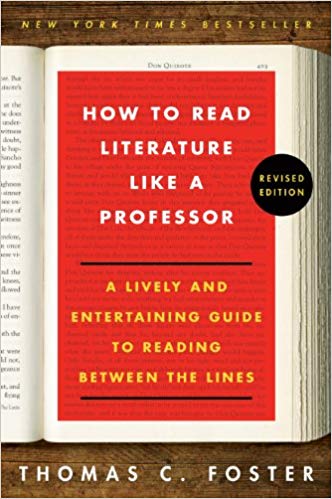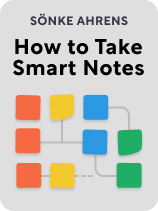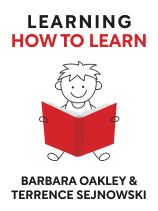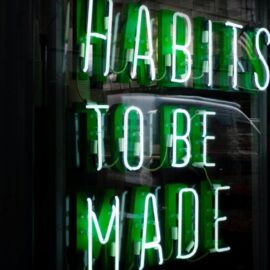

This article gives you a glimpse of what you can learn with Shortform. Shortform has the world’s best guides to 1000+ nonfiction books, plus other resources to help you accelerate your learning.
Want to learn faster and get smarter? Sign up for a free trial here .
Are you struggling in school? Do you want to learn how to be a better student?
If you’re having a hard time in school but you want to reach your full academic potential, you just might not have the right learning habits. Luckily, there are four habits you can pick up if you want to be a better student.
Let’s look at how you can be a better student with advice from esteemed academic self-help books.
1. Improve Your Reading Comprehension
This first tip might seem a bit radical, but your professors and teachers are the experts. If you want to be a better student, you need to step into their shoes. You only need to develop two skills to do so: skimming books and reading with a powerful memory.
Skim Books First
One tip for getting into the mindset of your professors is from Learning How to Learn by Barbara Oakley And Terrence Sejnowski. When you read a book (or an article, a chapter, or any other reading assignment), Oakley and Sejnowski recommend that you first skim through it, looking at headings and pictures to get a general sense of what it’s about before you read it in detail. This helps you absorb the material better because it’s easier to embed something in your memory (like the details of the book) if you relate it to something that’s already there (the information you got from skimming).
Read With a Powerful Memory
How to Read Literature Like a Professor by Thomas C. Foster suggests developing a powerful memory to read books the right way that will make you a better student. When you read with a powerful memory, you actively look for how the text corresponds to other literary works. You mentally flip through the things you’ve read before and look for similarities (or differences) to the structure, theme, or characters of what you’re reading now.
For example, as you watch the movie Pale Rider starring Clint Eastwood, you might be reminded of the movie Shane from 1953.
These similarities are what critics call intertextuality. Authors use references and parallels to draw connections to previous literary works.
Intertextuality in literature deepens the meaning of the text by drawing on the reader’s expectations.
Example of Memory: Going After Cacciato
A great example of intertextuality, an author referencing previous literature, occurs in Tim O’Brien’s novel Going After Cacciato. The novel has three interwoven stories: one, the history of protagonist Paul Berlin’s war experiences; two, an imagined trip to Paris in search of their fellow soldier Cacciato; three, the present night in which Paul Berlin is remembering the first story and inventing the second.
In one part of Berlin’s fantasy trip, he and his squad fall down a hole in the road. They end up in an otherworldly network of tunnels. One character even states that they need to fall back up. As a reader, you are invited to relate this part of the story to when Alice falls down the rabbit hole in Lewis Carroll’s Alice in Wonderland.
Now that you have made that connection, your reading of the story will be nuanced by that awareness. You might expect that the tunnels the characters find themselves in will be some kind of wonderland for them.
Memory: Sacred Texts
To truly read literature like a professor and be a better student, you need to be on the lookout for intertextual references to “sacred texts,” like Shakespeare, classic fairy tales, ancient myths, and the Bible.
Using recognizable themes or plots from these sacred texts gives the author the chance to use the reader’s associations to say more in their own work with fewer words. And for the reader, recognition of these references enhances the experience of reading current literature, because the modern stories share in the power of the sacred text.
How to Read Literature Like a Professor
by Thomas C. Foster
29 min reading time
24.4k reads
audio version available
2. Take Great Notes
Note-taking is an essential part of studying for future tests and writing papers. When you take notes in class, you’re more attentive because it requires physical exertion and active listening. You’ll also process information easier because you’re actively engaging with the information and what your professor is teaching you.
One way to effectively take notes in an organized fashion is the slip-box system, which was invented by German sociologist Niklas Luhmann.
How to Use the Slip-Box System
The slip-box system is highlighted in Sönke Ahrens’s book How to Take Smart Notes. Ahrens argues that since this slip-box system is specifically designed to help you both have and share original insights—and make the writing and studying process easier overall—it has several benefits over the traditional writing process: For example, using it will make you more efficient and lead to more creative insights.
The system will help you not only be a better student but a better writer. Writing essays and papers is a big part of being a student, and using the slip-box method can help you get good grades on these assignments.
If the slip-box system is only effective when you know how to use it, as Ahrens contends, you must learn how to properly use it. Here you’ll learn the specific steps Ahrens outlines to effectively use the slip-box system to create a publishable draft.
Step 1: Take Notes
Ahrens recommends taking three types of notes: temporary notes, literature notes, and evergreen notes.
1. Create temporary notes, which Ahrens calls “fleeting notes.” Most of us have random ideas as we go about our day. Jot these down so you don’t forget them, and put them all in one place—an in-tray, or what Ahrens calls an “inbox.”
2. Create literature notes. Always read with a pen—and whenever you come across interesting, potentially useful ideas, create literature notes. Using full sentences, summarize the text in your own words, making sure that you only include one idea per note. In each note, include information about the source material (like the book’s author, the year it was published, and the page number on which you found the idea). Place these literature notes in your in-tray.
3. Create evergreen notes, which Ahrens calls “permanent notes,” by combining your other notes. Each day, go over the notes in your in-tray and any notes you’ve already collected in your slip-box. As you do so, think to yourself: How do these ideas compare with and connect to each other? When you have an original thought about these connections, create a new note—ensuring that each original idea has its own note. Use full sentences, be as clear and concise as possible, and include citations.
This evergreen note should stand on its own; you shouldn’t have to refer to other material to understand it. For example, if you write, “Abraham Lincoln freed the slaves with the Emancipation Proclamation,” this note should include basic details of the Emancipation Proclamation but not a thorough analysis of its contents. Once you’ve encapsulated the ideas from your temporary notes into a permanent note, you can throw the temporary note away.
Step 2: File Notes
Now that you have notes, it’s time to organize them in one of two places: a reference system or your slip-box.
1. File your literature notes in one place that’s separate from your slip-box, like a shoebox: Ahrens refers to this place as your “reference system.” When you file your notes, include the bibliographic information of each source. If you have three literature notes about one book, you’ll file those notes with a fourth note including all the book’s bibliographic information—anything you might need to include in your final published work.
2. File your evergreen notes into your slip-box. To do so effectively, use the following system.
If your new note connects strongly to an old note—like if it supports an argument—file the new note behind that note. Otherwise, file it behind the most recent note.
Then, rummage through your slip-box and look for weaker or less obvious connections between notes you already have and your new notes. If you find any, create links between those notes. (For example, if Note #1 and Note #55 are connected, on Note #1, write down that it’s connected to Note #55, and on Note #55, write down that it’s connected to Note #1.)
Step 3: Link Notes to Your Index
Once you have notes in your slip-box, the next step is to link them to your index. This is any document with a list of topics with references to the notes on which those topics are mentioned. You use it to navigate the collection of notes in your slip-box so that you can find the right idea when you need it. You can link your evergreen notes to your index in one of two ways.
1. Create a new index entry whenever you notice that several evergreen notes in your slip-box all revolve around a single topic. This will consist of a keyword and the few notes most relevant to that keyword. Customize these keywords so they make sense to you and help you think: For example, a food writer with Note #30 that says “The best honey comes from Australia” might file that under the keywords “ingredient origins – honey.” An economist with that same note might file it under “beekeeping industry.”
2. Alternatively, link your evergreen note to an existing note (that’s listed in the index) instead of to the index itself. For example, if Note #31 reads, “Australian honey is very flowery,” you could link it to Note #30 using the method described in Step 5. Since Note #30 is still in the index, this technique ensures that you can still find Note #31—but it doesn’t overcrowd your index.
Step 4: Develop Your Ideas
Now that you have notes in your slip-box, you can use those notes to develop your ideas further. To do so, Ahrens recommends the following steps.
1. Review the notes in your slip-box and continue researching based on the questions that naturally come up: Ahrens argues that, as you create and regularly review several evergreen notes on similar topics, you’ll inevitably discover new threads of information you’ll want to follow. For example, if you’re a food writer researching Australian honey, one question that you may have—and should research—is what foods pair well with that honey.
2. Once you’ve created several notes, Ahrens argues, you’ll have enough notes to know what you want to write about. When this occurs, pull out all the notes related to that topic in your slip-box. Logically rearrange them: Ahrens contends that since all these notes are your own ideas, doing so will naturally reveal some form of argument. Critically analyze this argument: Does it still have significant gaps? How can it be stronger? Use the answers to inform further research. Eventually, when you pull out these notes, you’ll have the outline of a paper.
Step 5: Write, Revise, and Publish
Once you have a de-facto outline, you can move onto the final steps. Turn your ideas into publishable form with the following steps.
1. Write a rough draft based on the notes you pulled out previously. Don’t feel married to the structure you laid out: As we’ll describe in further detail, you think as you write, so your ideas may change as you write your draft. Your notes are meant to help you develop your argument—they don’t necessarily have to be the argument.
2. Revise your manuscript—repeating Steps 1-9 as necessary—then edit and publish it. Once this is done, return any notes you’ve removed to their respective homes: Literature notes should live in the reference system, while evergreen notes live in the slip-box.
3. Adopt Efficient Studying Skills
Now you’ve learned how to read more efficiently and write good papers, but how should you study? Specifically, how do you ensure that you do well on every quiz and test? With Cal Newport’s book How to Become a Straight-A Student, you’ll learn what to do—both outside of and during exam periods—to get the best grades possible on all your exams.
How to Study Outside of Exam Periods
Newport contends that if you want to get good grades, you must go to all your classes throughout the school year—not just when you have an exam. By doing so, you’ll gain a better understanding of the material and thus spend less time outside of class studying for your tests.
Moreover, you need to work on your assignments every day—moving ahead on the syllabus if necessary—so you avoid exhausting yourself on a single day because you have too much work to do.
However, Newport contends that the specific ways you prepare for and pay attention during lectures depend on what type of class you’re in. Here you’ll first learn how to prepare for and pay attention to your humanities classes. Then, we’ll discuss how to do so in your STEM classes—any classes that require completing regular problem sets, like math or engineering.
How to Ace Your Humanities Classes
If you want to ace your humanities tests and be a better student, Newport argues that you must understand the overarching themes of the class. Most humanities classes usually involve examining overarching themes or ideas. For example, a history class on the Civil War might contrast different experts’ opinions on why several Southern states seceded. So you must be able to pinpoint and understand each of these ideas.
But how do you pinpoint and understand these overarching ideas? The first key, Newport argues, is to take good notes in lectures, during which your professor will tell you what these ideas are. Unfortunately, your professor likely won’t be explicit about these ideas; instead, you’ll have to decipher their main points.
Newport contends that you can decipher main points by using the Question/Evidence/Conclusion (Q/E/C) method when taking notes. Every main theme can be broken down into a Question, its Evidence, and the Conclusion. Therefore, your lecture notes should also be formatted so they include the professor’s question(s), her conclusion(s), and any supporting evidence for each conclusion. You’ll probably need to write these out of order; often, your professor will present some evidence before she discusses her question. That’s OK as long as you eventually figure out all three parts. If you’re unsure if you’ve correctly understood a part, ask questions during the lecture or clarify your conclusions during your professor’s office hours.
Newport argues that the second key to understanding the main themes of a course is to prioritize the right reading because you can’t feasibly complete all the texts most humanities courses assign. To prioritize correctly, do all the reading from the main texts—these will appear multiple times on your syllabus. Take relatively detailed notes on these readings using the Q/E/C method, remembering that the conclusion—or main point—of a text is usually its thesis.
Newport recommends that you look at the other texts, too, but not nearly as carefully. If a text has a thesis, read it well enough to understand what that thesis is. Skim texts that give detailed accounts of important figures or occurrences so you learn relevant facts. Skip everything else, but bring these texts to class so you can refer to them if the professor discusses them.
How to Ace Your STEM Classes
If you want to be a better STEM student, Newport argues that you must understand how to solve problems. Most STEM courses don’t require you to understand overarching themes; rather, you need to master the problem-solving techniques and formulas presented so you can apply them to your own work.
So how can you master these techniques? Newport argues that the first step is to skip the reading because your professor will describe those exact techniques to you during class. Instead, bring the reading to class to help you follow the lecture, and only review the text in-depth if you’re still lost after the lecture.
Then, once you get to class, take good notes: Write down every problem and answer you hear, and do your best to write down each step of the solution—prioritizing the steps of the solution to the first problem, which is when your professor will present the most detailed explanation. If you don’t understand a specific step, Newport recommends asking questions. Clarifying your understanding during class will save you hours of study time outside of it.
Finally, Newport argues that you need to work efficiently on your problem sets. To do so, first space out your problems: Select a few to try solving each day—and if you can’t, go about your day while mulling over them occasionally. Eventually, inspiration will strike, and you’ll come up with a solution.
In addition, Newport suggests that you work with others if you’re still stuck—as long as it’s not against the rules. Become a regular at your teachers’ office hours to ask questions, and schedule a weekly group study session with some classmates to work through any problems that confuse you even after you’ve thought about them for a while.
4. Take Care of Yourself
In between study sessions, it’s important to remember that your mental and physical health goes first. You won’t be a better student if you’re struggling with personal issues, which is why Learning How to Learn highlights two ways for you to take care of yourself so your schoolwork doesn’t suffer.
Exercise Between Study Sessions
The first tip for taking care of yourself is to exercise between study sessions. The authors of Learning How to Learn assert that interspersing exercise with your studies can make your studying more effective because physical fitness promotes neural health. Specifically, exercise causes your body to produce a hormone called BDNF, which stimulates the growth of dendritic spines on neurons, strengthening your synapses.
Get Enough Sleep
The authors’ second tip on how to be a better student is to get enough sleep. They say sleep is the key to making your studies effective because sleep plays several important roles in learning and brain function:
Active recall initiates growth of new dendritic spines, which strengthen synaptic connections, solidifying ideas in your brain. However, Oakley and Sejnowski note that while active recall initiates this growth, dendritic spines only grow when you sleep. Additionally, while you sleep, unused dendritic spines get cleared away, allowing your brain to divert energy to strengthen the connections you use most. Thus, without adequate sleep, you won’t be able to advance in your learning, because you won’t be able to strengthen your synaptic connections.
Sleep Reorganizes Information to Help You Remember
According to Oakley and Sejnowski, sleep is also essential for organizing information in your memory. They explain that as you learn new things, new synapse chains initially form in the hippocampus, a part of your brain near the center of your head where new neuron growth is particularly active. Thus, your hippocampus acts as an initial staging area for information that you store in long-term memory. When you sleep, your brain copies the new synapse patterns from your hippocampus to your cerebral cortex, where they are consolidated and preserved for the long term. This makes room for more new patterns to be formed in the hippocampus.
Sleep Cleanses Your Brain
Another reason sleep is crucial for learning, according to the authors, is that it helps manage toxins that your neurons generate as a byproduct of normal thought processes. These toxins build up in your brain when you’re awake, but when you sleep, your brain flushes them out. Without adequate sleep, the toxins can build up to levels that inhibit certain brain functions, making it harder for you to learn.
Oakley and Sejnowski also caution that chronic sleep deprivation, and its resulting toxin buildup, can have additional negative effects on your body such as the increased risk of cancer and mental illness.
Learning How to Learn
by Barbara Oakley and Terrence Sejnowski
13 min reading time
100.1k reads
audio version available
Final Takeaways
By implementing these practices into your life, you can become a better student. Whether it be for high school or college, getting good grades provides discipline and a strive for achievement that is needed throughout your entire life. Being a great student is also a gateway to being a great employee, when the time comes. You’ll thank your former self for adopting these great habits.
Do you have any advice for becoming a better student? Leave it in the comments below!

Want to fast-track your learning? With Shortform, you’ll gain insights you won't find anywhere else .
Here's what you’ll get when you sign up for Shortform :
- Complicated ideas explained in simple and concise ways
- Smart analysis that connects what you’re reading to other key concepts
- Writing with zero fluff because we know how important your time is









